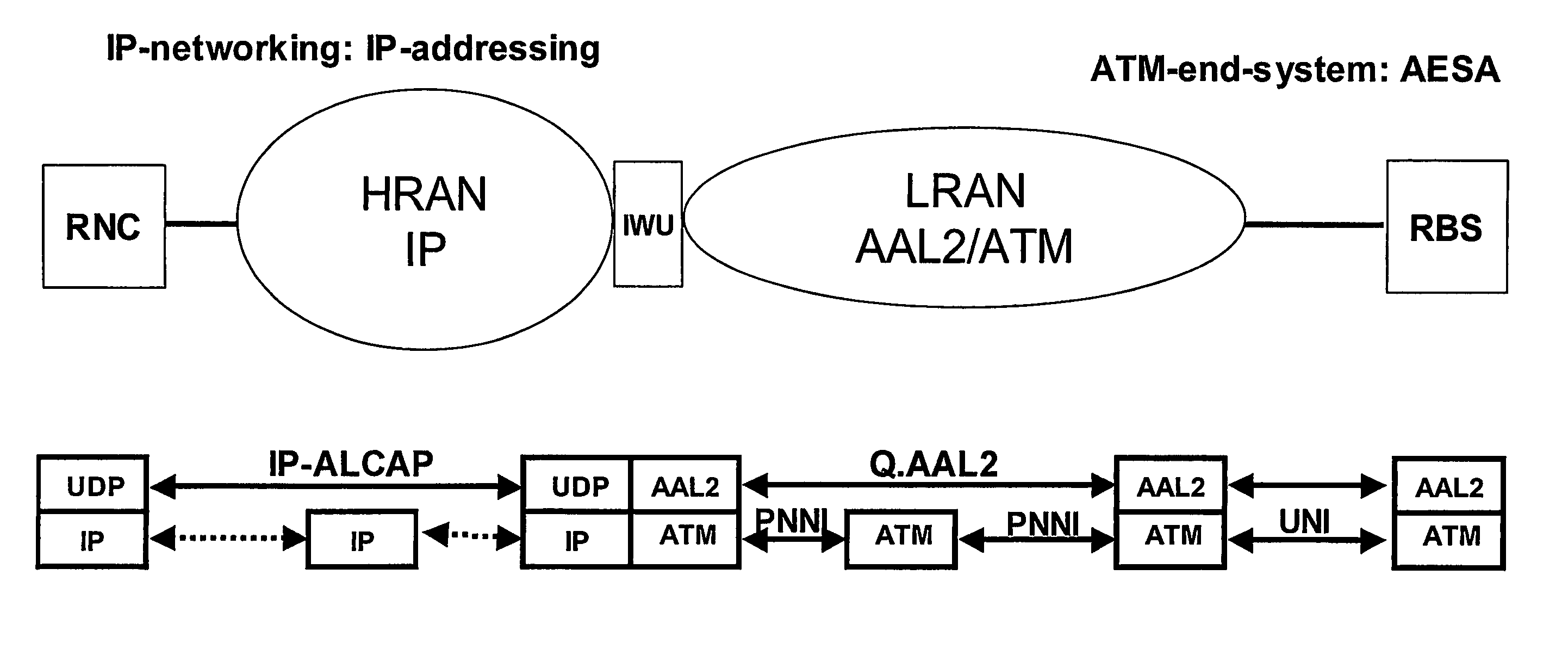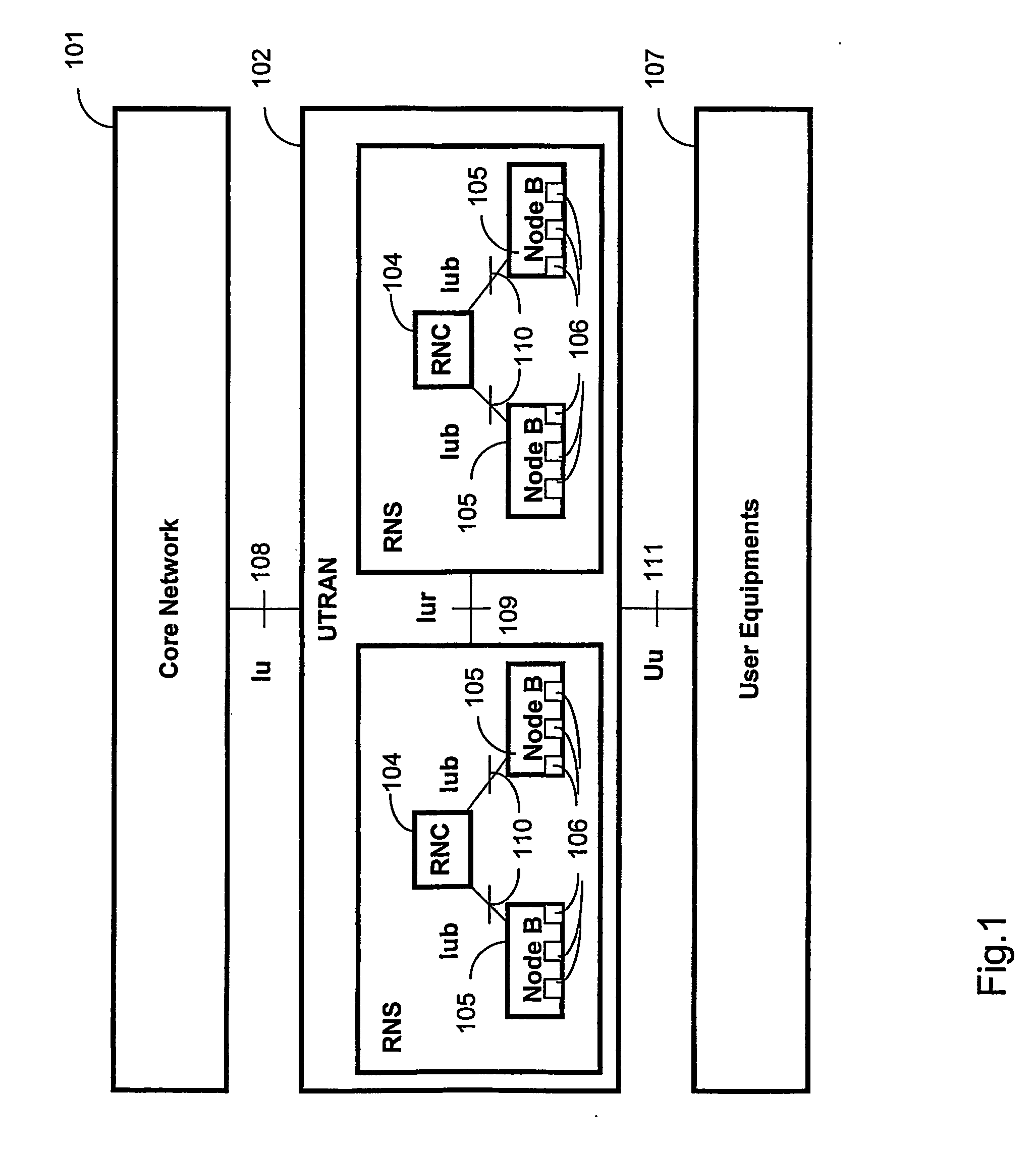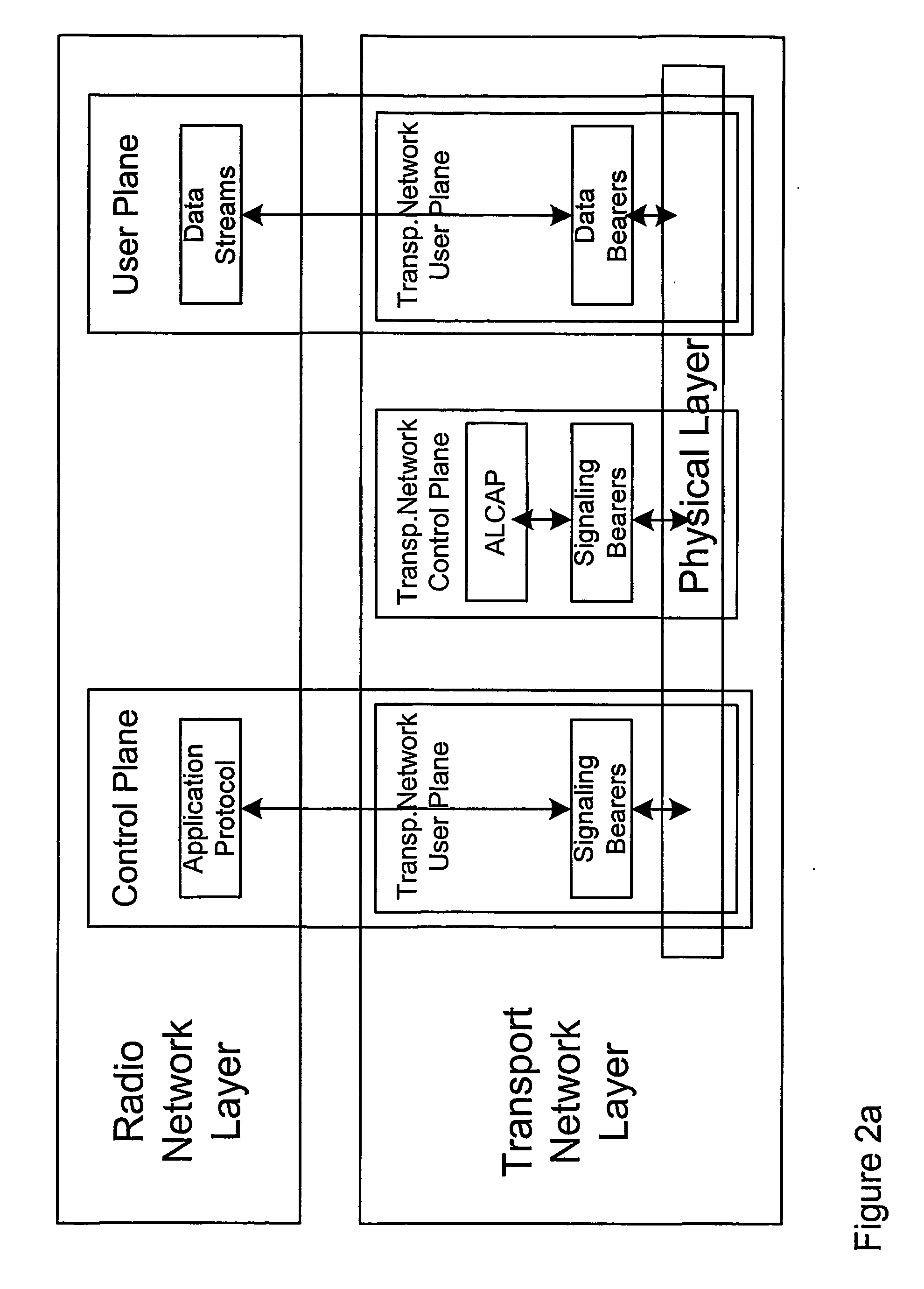Method and an arrangement for transport layer control signalling in utran supporting both atm and ip transport technologies
- Summary
- Abstract
- Description
- Claims
- Application Information
AI Technical Summary
Benefits of technology
Problems solved by technology
Method used
Image
Examples
first embodiment
[0049] In accordance with the present invention, the TNL signalling solution is adapted for implementation in an IP based UTRAN. One RSVP-TE tunnel is established for each connection and standard RSVP-TE objects and messages are used as mentioned above. In order to achieve bi-directional reservation, one tunnel is established for downstream and another tunnel for upstream user traffic.
[0050] The network model between the RNC and the Node B in case of a full IP based network according to the first embodiment of the present invention is shown in FIG. 3a. It comprises an RNC, a Node B (also denoted base station) and interior routers. The RNC and the Node B are edge nodes using the terminology of the RMD concept.
[0051] The solution according to first embodiment of the invention may also be used in the case of mixed IP / ATM network, in which an Inter-working Unit (IWU) is adapted to operate between the IP and the ATM network parts. This scenario is shown in FIG. 3b. In this case the IWU ...
second embodiment
[0064] The TNL signalling is in the following way:
[0065] The TNL signalling is adapted to control both ATM and AAL2 layers of AAL2 switches. So, the establishment of a new AAL2 connection may initiate the creation or modification of ATM VCs.
[0066] Moreover, the TNL signalling may also be adapted to control the AAL2 layer only. The ATM layer of AAL2 switches is configured semi-permanently by standard RSVP-TE or via the management system. This is denoted as RSVP-TE(ATM) and is performed according to prior art.
[0067] The model of the UTRAN between an RNC and a Node B and a basic unidirectional signalling operation are shown in FIG. 4a in the network part between the RNC and ALL2 switch, indicated in FIG. 4a, the ATM network layer is semi-permanent while the other part (between AAL2 switch and Node B) it is set up dynamically on-demand. (Could you explain this further. I don't understand the figure with the arrows.) This means that between RNC and AAL2 switch only the AAL2 layer is c...
third embodiment
[0085] According to the present invention, the proposed TNL signalling may also be used in a mixed ATM-IP network, in which HRAN is IP based and LRAN is ATM based. An Inter-working Unit (IWU) operates between the ATM and IP network parts, see FIG. 2b. In the user plane, the IWU converts the IP packets to ATM packets, but the IWU is not needed for the control plane, which is an advantage of the present invention.
[0086] The method according to the present invention is illustrated by the flowchart in FIG. 7. Thus, the method for controlling the user plane of a UMTS Terrestrial Radio Access Network, UTRAN, comprising a first edge node connected via a Transport Network Layer to a second edge node, by using Transport Network Layer, TNL, signalling, comprises the steps of: [0087] 701. Transmitting RSVP-TE based TNL signalling messages between said first and second edge nodes for each TNL flow, [0088] 702. Identifying each TNL flow by using RSVP-TE messages, wherein the object SESSION and S...
PUM
 Login to View More
Login to View More Abstract
Description
Claims
Application Information
 Login to View More
Login to View More - R&D
- Intellectual Property
- Life Sciences
- Materials
- Tech Scout
- Unparalleled Data Quality
- Higher Quality Content
- 60% Fewer Hallucinations
Browse by: Latest US Patents, China's latest patents, Technical Efficacy Thesaurus, Application Domain, Technology Topic, Popular Technical Reports.
© 2025 PatSnap. All rights reserved.Legal|Privacy policy|Modern Slavery Act Transparency Statement|Sitemap|About US| Contact US: help@patsnap.com



